Czy akumulatory można ułożyć do przechowywania?
Podczas organizowania warsztatów, garaż, lub planujesz domową instalację energetyczną, nieuchronnie staniesz przed pytaniem, jak przechowywać baterie. Aby zaoszczędzić miejsce, czy możesz po prostu ułożyć je jeden na drugim? To jest krytyczne pytanie bezpieczeństwa, a odpowiedź brzmi stanowczo i wyraźnie: „nie”.," chyba, że są do tego specjalnie zaprojektowane.
Nie należy przechowywać baterii poprzez dowolne układanie ich w stosy. Jest bezpieczne tylko wtedy, gdy są specjalnie zaprojektowane do bezpośredniego układania w stosy i wyposażone w takie funkcje, jak osłony blokujące. Dla większości aplikacji systemowych, najbezpieczniejszy i najbardziej profesjonalny sposób na „stosowanie”." akumulatorów polega na zainstalowaniu ich w specjalnie skonstruowanej skrzynce na baterie, którą można ustawiać jeden na drugim, gabinet, lub stojak. Zapewnia to stabilność, Bezpieczeństwo elektryczne, i właściwa wentylacja.
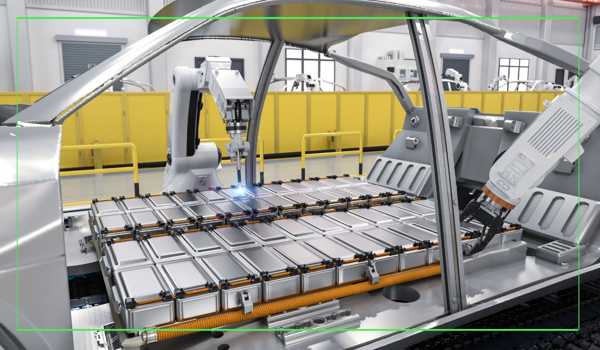
W Gycx Solar, postrzegamy obudowę jako integralną część systemu akumulatorowego. Nasz profesjonalista pojemniki na baterie, które można układać w stosy i stojaki stanowią podstawę bezpiecznego i niezawodnego rozwiązania w zakresie magazynowania energii. Przyjrzyjmy się kilku kluczowym pytaniom związanym z bezpiecznym przechowywaniem baterii.
Czy zamknięte baterie muszą znajdować się w pudełku na baterie??
Wybrałeś szczelną baterię, jak walne zgromadzenie, Żel, lub model litowo-jonowy, który nie wycieka żrącego kwasu. To świetny krok w stronę bezpieczeństwa i wygody, ale czy to oznacza, że nie potrzebuje pudełka ochronnego ani obudowy??
Tak, jest nadal wysoce zalecane, i często wymagane przez kod, w celu umieszczenia szczelnie zamkniętych akumulatorów w odpowiedniej skrzynce lub obudowie. Pudełko na szczelną baterię nie służy jednak do zapobiegania wyciekom, spełnia kilka innych kluczowych funkcji: zapewnia witalność ochrona przed uszkodzeniami fizycznymi, zapobiega przypadkowym zwarcia przez terminale, gwarantuje, że bateria jest bezpiecznie zamontowany, i pomaga organizacja i zarządzanie ciepłem.
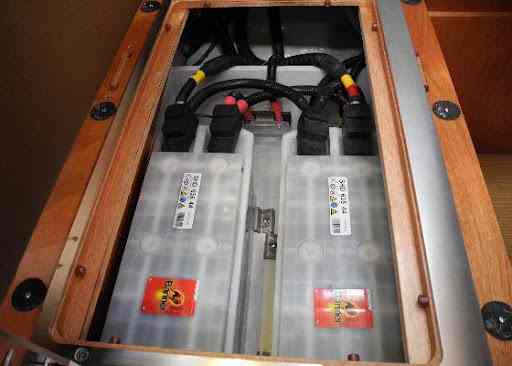
Nurkuj głębiej: Wiele funkcji skrzynki na baterie
Pudełko na baterie to coś więcej niż tylko pojemnik; to system bezpieczeństwa.
- Ochrona fizyczna: Pudełko spełnia rolę tarczy, chroniąc zaciski akumulatora i obudowę przed uderzeniami, Przebite, lub uszkodzony przez spadające przedmioty. Jest to szczególnie ważne w przypadku akumulatorów litowych z bardziej miękkimi ogniwami kieszeniowymi.
- Bezpieczeństwo elektryczne: Jest to funkcja podstawowa. Pudełko z pokrywką zakrywa zaciski pod napięciem, uniemożliwiając użycie metalowego narzędzia, kawałek wyposażenia, lub inny przewodzący przedmiot przed przypadkowym upadkiem na nie i spowodowaniem niebezpiecznego zwarcia.
- Bezpieczny montaż: Skrzynka na akumulator zawiera punkty montażowe umożliwiające bezpieczne przymocowanie akumulatora do pojazdu, łódź, lub konstrukcję budynku, zapobiegając jego przesuwaniu się lub przewracaniu.
- Powstrzymanie: Podczas gdy nowoczesne szczelne akumulatory nie powodują wycieku kwasu, w przypadku rzadkiej, katastrofalnej awarii, solidna obudowa może pomóc w ograniczeniu zagrożeń.
- Organizacja: Tworzy schludny, czysty, i profesjonalna instalacja, zapewniając ochronę i porządek akumulatorów i związanego z nimi okablowania. Dla naszych pojemnik na baterie z możliwością układania w stosy systemy, szafa spełnia wszystkie te funkcje dla wielu modułów jednocześnie.
Czy można przechowywać baterie razem w pudełku??
Masz pudełko do przechowywania, i masz kilka baterii. Czy bezpiecznie jest po prostu połączyć je wszystkie razem? Odpowiedź zależy całkowicie od Jak umieszczasz je w pudełku.
Baterie można przechowywać razem w pudełku tylko wtedy, gdy zostaną podjęte środki ostrożności, aby ich zaciski nie stykały się ze sobą ani z żadnym innym przedmiotem przewodzącym. Do luźnych ogniw konsumenckich (jak AA lub 9V), oznacza to użycie oryginalnego opakowania lub plastikowych pojemników na baterie. Do większych akumulatorów systemowych, profesjonalista pojemnik na baterie z możliwością układania w stosy został specjalnie zaprojektowany z oddzielnymi przegródkami lub półkami, aby bezpiecznie pomieścić wiele modułów blisko siebie.
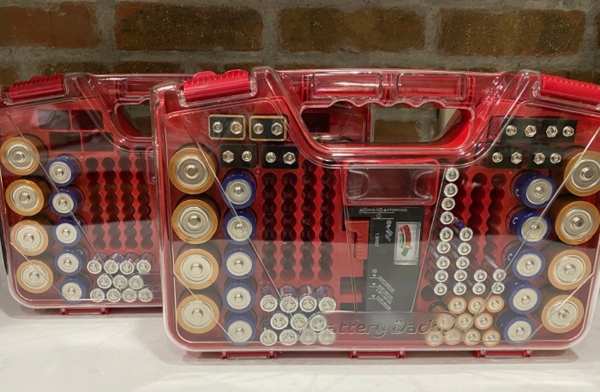
Nurkuj głębiej: Niebezpieczeństwo niezabezpieczonych terminali
Złota zasada przechowywania baterii brzmi zapobiegać zwarciom.
- Ryzyko: Jeśli pozytyw (+) i negatywne (-) zaciski akumulatora są połączone przedmiotem przewodzącym (jak zacisk innego akumulatora, klucz, lub nawet folię aluminiową), powoduje to zwarcie. W wyniku tego zwarcia akumulator rozładuje swoją energię niemal natychmiast, powodując jego szybkie przegrzanie, potencjalnie wyciek, odpowietrznik, lub nawet się zapalić. Jest to szczególnie niebezpieczne w przypadku wysokoenergetycznych akumulatorów litowo-jonowych.
- Bezpieczne przechowywanie luźnych komórek:
- Przechowuj je w oryginalnym opakowaniu detalicznym (opakowania blistrowe).
- Używaj dedykowanych plastikowych pojemników na baterie lub organizerów.
- Na baterie 9V, ważne jest, aby zakleić złącza zatrzaskowe taśmą.
- Profesjonalne rozwiązanie dla akumulatorów systemowych:
To jest właśnie problem naszego Gycx Solar pojemniki na baterie, które można układać w stosy (lub stojaki) rozwiązanie dla dużych systemów energetycznych. Są zaprojektowane z indywidualnymi gniazdami, półki, i bezpieczne punkty mocowania dla każdego modułu akumulatorowego. Taka konstrukcja gwarantuje, że każdy potężny moduł będzie bezpiecznie utrzymywany na miejscu, bez możliwości przypadkowego zwarcia zacisków ze sobą. To profesjonalny sposób przechowywania wielu baterii razem.
Jakie są zasady pakowania baterii?
Prawdopodobnie zauważyłeś, że nowe baterie są zawsze dostarczane w bezpiecznym opakowaniu. Jakie zasady to regulują, i czego mogą nas nauczyć na temat bezpiecznego przechowywania?
„Złota zasada" do pakowania akumulatorów, w dużej mierze wynikają z rygorystycznych przepisów transportowych organów takich jak FAA (Federalna Administracja Lotnicza) i kropka (Departament Transportu), jest zapobiegają zwarciom i chronią akumulatory przed uszkodzeniami fizycznymi. Oznacza to, że zaciski muszą być całkowicie odizolowane, aby nie mogły stykać się ze sobą ani z powierzchniami przewodzącymi. Typowe metody obejmują indywidualne opakowania blistrowe, plastikowe nakładki na zaciski, lub umieszczanie baterii w oddzielnych torebkach lub tacach w większym pudełku.
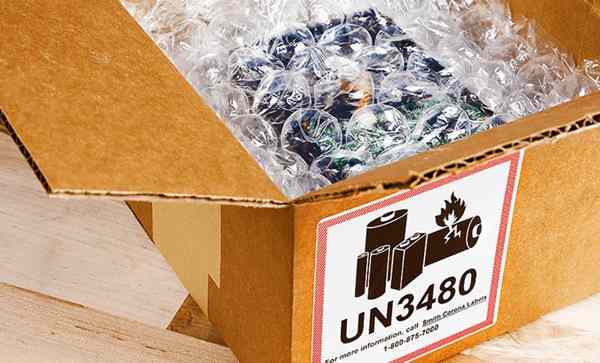
Nurkuj głębiej: Uczenie się na podstawie przepisów bezpieczeństwa transportu
Zasady wysyłki akumulatorów, zwłaszcza powietrze, są niezwykle rygorystyczne, ponieważ pożar samolotu to katastrofa. Te same zasady możemy zastosować do bezpiecznego przechowywania w domu:
- Izoluj terminale: Zasadą numer jeden jest zapewnienie, że terminale nie będą mogły nawiązać kontaktu. Dlatego nowe baterie są dostarczane w opakowaniach, które je oddzielają. Kiedy je wyjmiesz, ta ochrona zniknie, chyba że zapewnisz nowe rozwiązanie (jak obudowa baterii).
- Zapobiegaj zmiażdżeniu i przekłuciu: Opakowanie musi być wystarczająco mocne, aby zapobiec zmiażdżeniu lub uszkodzeniu akumulatorów, co mogłoby spowodować wewnętrzne zwarcie.
- Używaj materiałów nieprzewodzących: Baterie powinny być oddzielone materiałami nieprzewodzącymi (jak plastik opakowania lub kartonowa przekładka).
- Stosowanie zasad w domu: Traktuj swoją „szufladę baterii" jak pudełko wysyłkowe. Nie wrzucaj baterii luźno do innych metalowych przedmiotów. Te same zasady, które zapobiegają pożarowi przy 30,000 stopy zapobiegną takim w twoim domu. To zdyscyplinowane podejście do bezpieczeństwa jest powodem dla dużego domowego systemu energetycznego, profesjonalista, w załączeniu pojemnik na baterie z możliwością układania w stosy to nie tylko dobry pomysł – jest niezbędny.
Czy bateria litowo-polimerowa może się zapalić, jeśli będzie obsługiwana nieprawidłowo?
Rozmawialiśmy o ryzyku zwarć. Skupmy się na konkretnym i bardzo powszechnym typie baterii litowej: polimer litowy (LiPo) bateria znajdująca się w wielu smukłych urządzeniach elektronicznych, drony, i urządzenia hobbystyczne. Czy są szczególnie niebezpieczne?
Tak, absolutnie. Polimer litowy (LiPo) bateria, szczególnie odmiana z miękkim woreczkiem, jest bardzo energochłonny i może być lotny. To może zapalić się lub nawet eksplodować w przypadku nieprawidłowego obchodzenia się z nim. Są szczególnie narażeni na uszkodzenia fizyczne, takie jak przebicie, jak również przeładowanie lub zbyt głębokie rozładowanie. Jest to kluczowy powód dla dużych, stacjonarne domowe magazyny energii, znacznie bezpieczniejsza i solidniejsza chemia litu, LFP (Fosforan żelaza litu), to standard zawodowy.
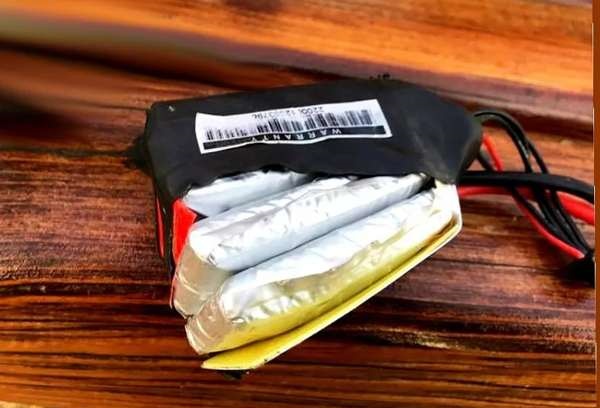
Nurkuj głębiej: Zrozumienie LiPo vs. Bezpieczeństwo LFP
Ważne jest, aby rozróżnić różne składy chemiczne litu:
- Polimer litowy (LiPo):
- Projekt: Często wykorzystuje elastyczną foliową „woreczek”." jak jego obudowa. Dzięki temu jest lekki i wszechstronny i można go dopasować do smukłych urządzeń, takich jak tablety i drony.
- Wrażliwość: Ten miękki woreczek można łatwo przekłuć. Przebicie może spowodować wewnętrzne zwarcie, prowadzące do gwałtownego, gwałtowne uwolnienie energii i ognia.
- Wrażliwość: Chemia LiPo jest również bardzo wrażliwa na przeładowanie lub nadmierne rozładowanie. Może to spowodować puchnięcie akumulatora ("ptyś"), co jest oznaką wewnętrznego nagromadzenia się gazu i nieuchronnej awarii. Nadmuchany akumulator LiPo stwarza ryzyko pożaru i należy go natychmiast i bezpiecznie wycofać z użytku.
- Fosforan żelaza litu (LFP):
- Projekt: Ogniwa LFP zastosowane w naszym Gycx Solar pojemniki na baterie, które można układać w stosy są zazwyczaj ogniwami pryzmatycznymi umieszczonymi w solidnych obudowach, sztywne metalowe obudowy. Są one następnie instalowane w stojaku ochronnym lub szafce.
- Nieodłączne bezpieczeństwo chemiczne: LFP jest najbezpieczniejszym ze wszystkich powszechnie stosowanych chemikaliów litowo-jonowych. Ma znacznie wyższy próg niekontrolowany termiczny, co oznacza, że może wytrzymać większe nadużycia i ciepło, zanim przejdzie w stan awarii. Prawdopodobieństwo zapalenia się jest znacznie mniejsze.
- Krzepkość: Połączenie bezpieczniejszej chemii i trwałej konstrukcji fizycznej sprawia, że LFP jest idealnym i zdecydowanie preferowanym wyborem w zakresie bezpieczeństwa, niezawodne magazynowanie energii w domu.
Gycx Solar Historia: „Bezpieczeństwo naszych klientów jest dla nas najwyższym priorytetem. Dlatego w naszych domowych systemach akumulatorowych stosujemy wyłącznie chemię LFP. Natomiast LiPo świetnie nadaje się do drona hobbystycznego, dla potężnego systemu, który mieszka w Twoim domu, nic nie zastąpi sprawdzonego bezpieczeństwa i stabilności LFP zamkniętego w profesjonalnej obudowie."
Więc, czy akumulatory można przechowywać jeden na drugim? Tylko wtedy, gdy zostanie to wykonane profesjonalnie i bezpiecznie w ramach zaprojektowanego do tego systemu. Właściwy pojemnik na baterie z możliwością układania w stosy lub stojak to nie tylko dodatek; jest to krytyczny system bezpieczeństwa, który chroni przed zwarciami, uszkodzenie fizyczne, i przegrzanie. Poprzez zrozumienie zasad bezpiecznego przechowywania i dobór odpowiedniej chemii akumulatorów, tak jak LFP1
, dla tej pracy, możesz zapewnić niezawodną i bezpieczną przyszłość energetyczną.
Jeśli masz pytania dotyczące naszego profesjonalisty, bezpieczna, i solidne rozwiązania w zakresie przechowywania akumulatorów, Nasz zespół ekspertów w Gycx Solar jest gotowy do pomocy. Skontaktuj się z nami w celu konsultacji!
Zrozumienie koncepcji LFP pomoże Ci lepiej porównać i zrozumieć koncepcje danych związanych z baterią. Pomoże to wybrać produkt, który najlepiej odpowiada Twoim potrzebom od naszej firmy. ↩
